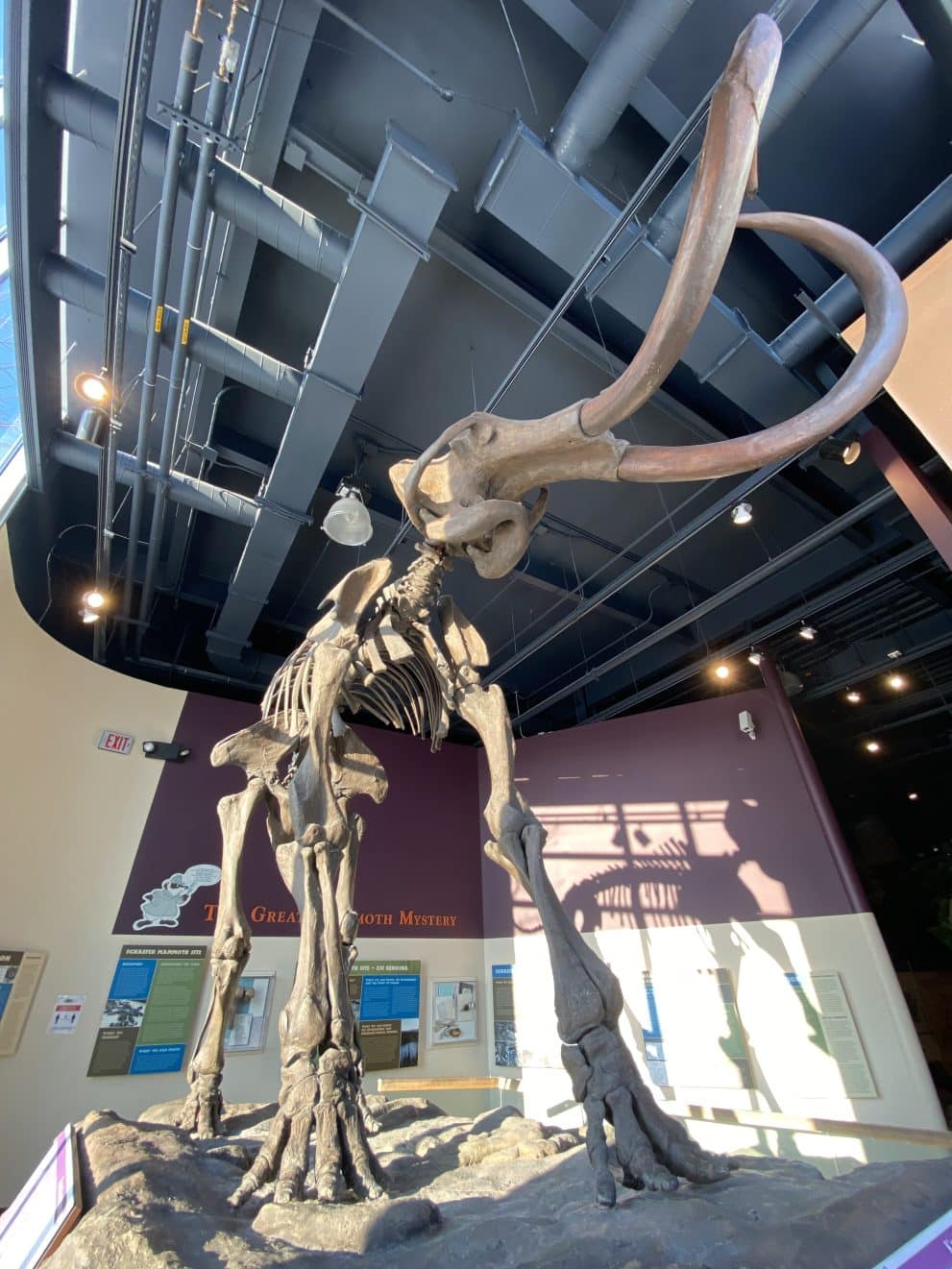Mammoths at the Museum
Kenosha Public Museum
A centerpiece of the Kenosha Public Museum is the Schaefer and Hebior mammoth exhibition. Archaeologists Dan Joyce and David Wasion rediscovered the Schaefer mammoth in the Town of Paris, Kenosha County in 1992.
Schaefer Mammoth Discovery
The Schaefer mammoth discovery began in 1964, when a farmer by the name of Frank Schaefer had hired a man to cut a drainage tile ditch through his field. While excavating the ditch, the contractor hit something that literally knocked him off his feet. Remarkably he had banged into the end of a woolly mammoth’s femur. A little more digging revealed tusk fragments.
At the time, Phil Sander, a local amateur archaeologist, sketched a detailed map of the site, and Mr. Schaefer donated the bones to the Kenosha Public Museum.
Dan Joyce used Sander’s map almost 30 years later, in 1991, to relocate the site on the Schaefer farm. After about 18 months of painstaking work, he and his team of volunteers discovered the nearly complete remains of the oldest known mammoth believed to have been butchered by humans with tools east of the Mississippi River. The Schaefer mammoth was 80 percent complete.
“The mammoth had died near the edge of a lake formed by glacier melt. Because it died thousands of years before the advent of bows and arrows, it was likely killed by Paleo-Indians wielding thrusting spears,” Joyce explained.
During the excavation of the Schaefer site, Frank Schaefer’s neighbor, John Hebior, approached Mr. Schaefer about a large bone he had uncovered on his farm many years before the Schaefer mammoth was discovered.
Hebior Mammoth Discovery
One year after the Schaefer mammoth was excavated, Wasion went to work again, this time with archaeologist Dr. David Overstreet, on excavating the Hebior mammoth. What they discovered was that like the Schaefer mammoth, the Hebior mammoth was disarticulated and possessed the cut marks and stone tools which led to the conclusion that it, too, was butchered by humans.
The Hebior mammoth is the most complete mammoth (90 percent) ever excavated. It is also the largest wooly mammoth ever excavated; and it and the Schaefer mammoth site are two of the three oldest archaeological sites in the Western Hemisphere.
Originally thought to be 10-12,000 years old, carbon dating later established the bones are 12,500 radiocarbon years old (14,500 years ago).
Eileen Johnson, an archaeologist from Texas Tech University, said, “there appears to be marks that were made by tools, certainly by people.” This meant people were in Wisconsin 1,000 years before what was previously thought to be the oldest discovered human community in the Western Hemisphere–Monte Verde in southern Chile.




